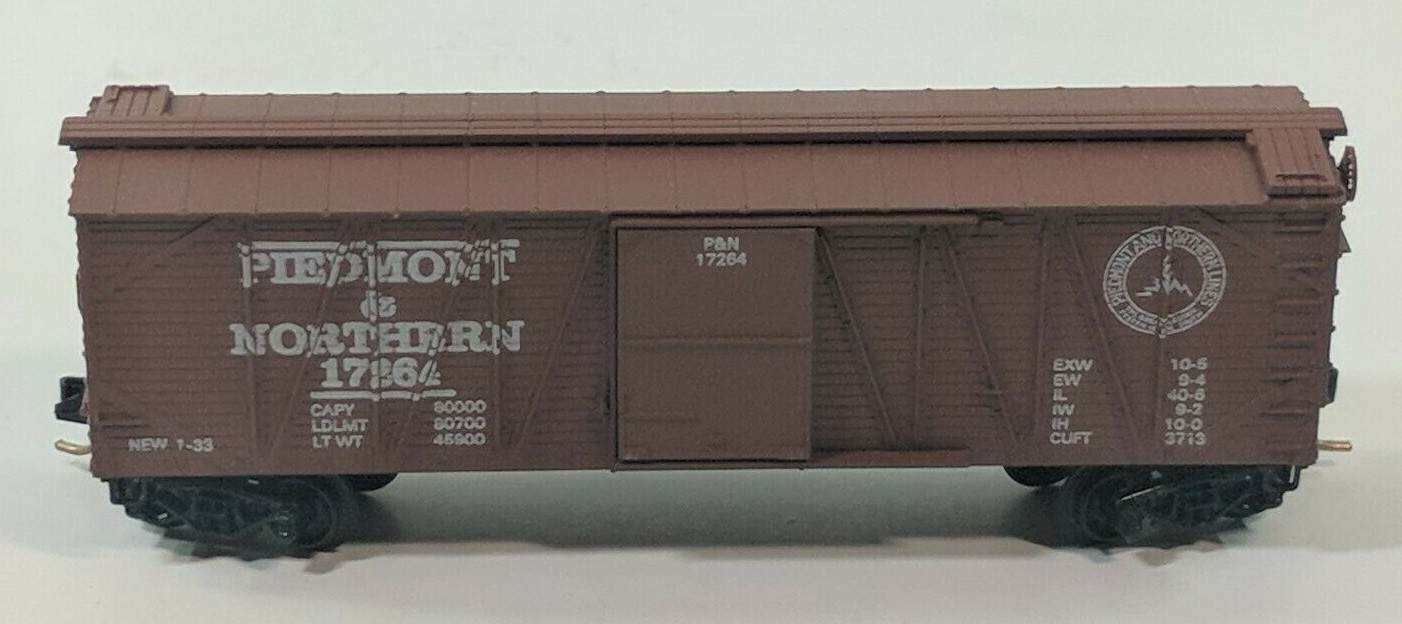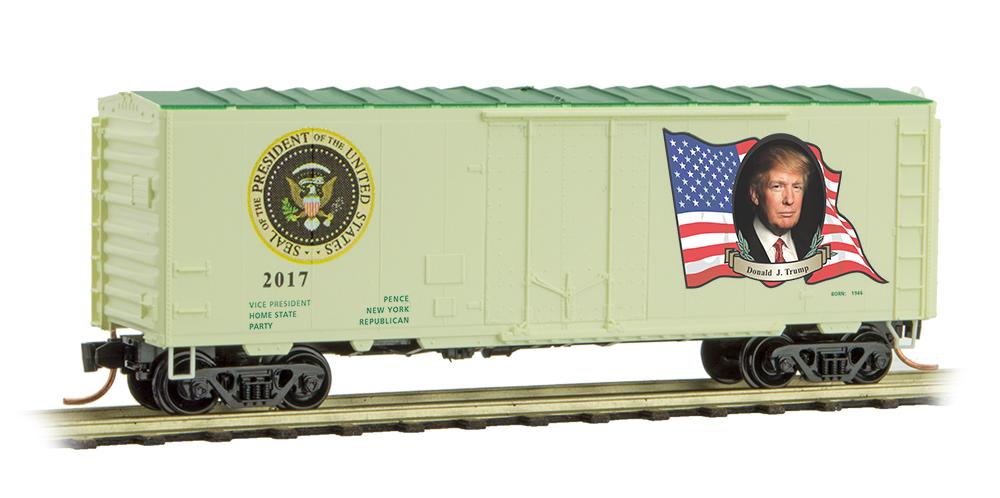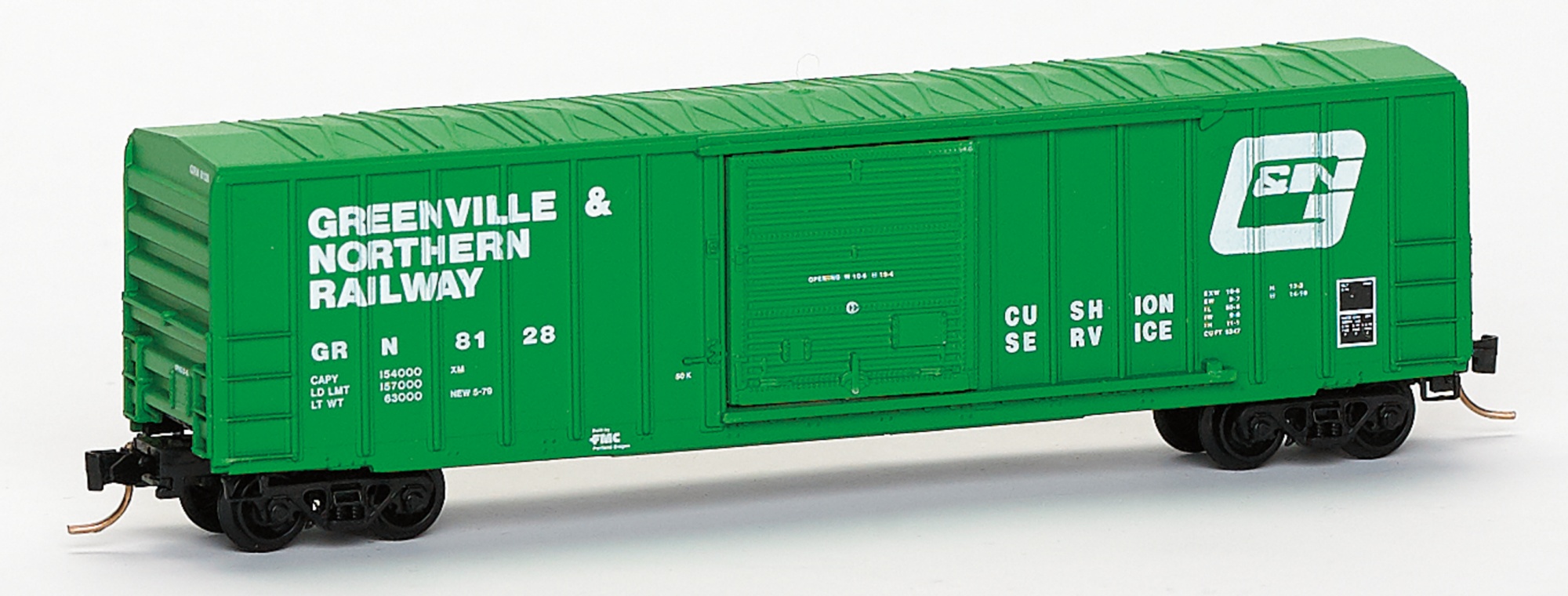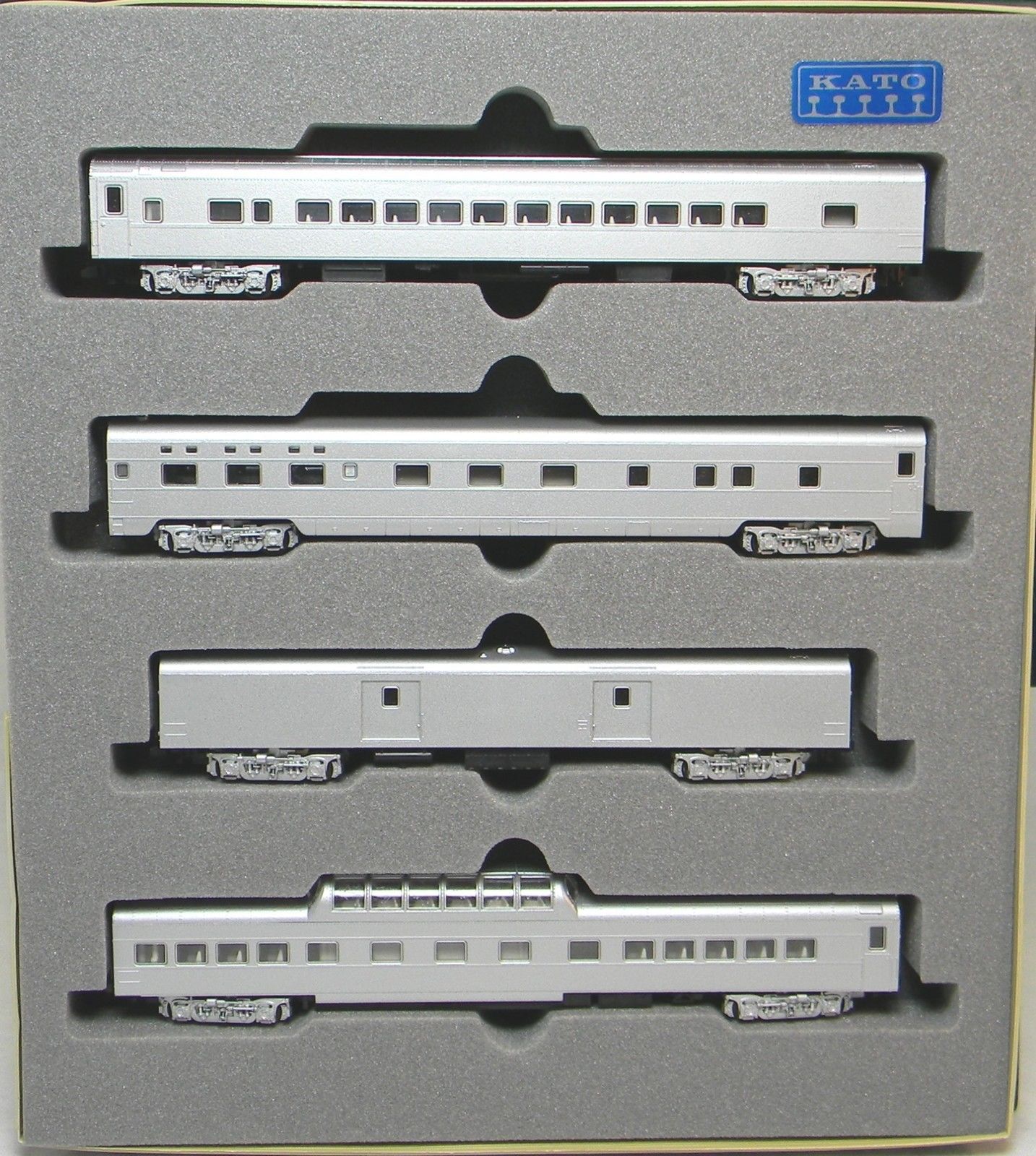Specific Item Information: Walthers GP38-2 decorated by Micro-Trains
Model Information: This model was first released by Life-Like in 1988. It was later made by Life-Like for Bev-Bel in the early 1990's. It was overhauled in 2006. After the acquisition by Walthers, it was again updated in 2015 and sold under the Walthers N brand. This has always been an economy model that runs well and doesn't cost as much as the Kato and Atlas equivalents.
The original design was a simple open-sided 5-pole motor with weights and truck-mounted rapido couplers. The 2006 version went to a split frame design with flywheels, LED lights and body mounted Accumate couplers. The motor is NOT isolated from the frame so this version is not DCC-Ready. The 2015 version does accept a drop-in decoder and is DCC-Ready. This most recent Walthers version has Micro-Trains couplers.
The original design was a simple open-sided 5-pole motor with weights and truck-mounted rapido couplers. The 2006 version went to a split frame design with flywheels, LED lights and body mounted Accumate couplers. The motor is NOT isolated from the frame so this version is not DCC-Ready. The 2015 version does accept a drop-in decoder and is DCC-Ready. This most recent Walthers version has Micro-Trains couplers.
DCC Information: The early 1988 version is not DCC anything.
The 2006 redo is marginally DCC-Friendly. A DCC decoder installation for this version can be found on Brad Myers' N-scale DCC decoder installs blog and in this article. Using a drop-in decoder for Atlas locos is also possible, pending some modification of the chassis and some soldering, as shown on the same article.
The 2015 version is fully DCC-Ready, and will accept the following drop-in decoders:
- Digitrax DN163L0A: 1 Amp N Scale Mobile Decoder for Walthers/life-Like Proto GP20 and similar locos
- TCS L1D4 (Installation in Life-Like GP20, very similar to this GP38-2)
The 2006 redo is marginally DCC-Friendly. A DCC decoder installation for this version can be found on Brad Myers' N-scale DCC decoder installs blog and in this article. Using a drop-in decoder for Atlas locos is also possible, pending some modification of the chassis and some soldering, as shown on the same article.
The 2015 version is fully DCC-Ready, and will accept the following drop-in decoders:
- Digitrax DN163L0A: 1 Amp N Scale Mobile Decoder for Walthers/life-Like Proto GP20 and similar locos
- TCS L1D4 (Installation in Life-Like GP20, very similar to this GP38-2)
Prototype History: The EMD GP38-2 is a four-axle diesel-electric locomotive of the road switcher type built by General Motors, Electro-Motive Division. Part of the EMD Dash 2 line, the GP38-2 was an upgraded version of the earlier GP38. Power is provided by an EMD 645E 16-cylinder engine, which generates 2000 horsepower (1.5 MW). Most built still remain in service in the modern era due to ease of maintenance and exceptional reliability.
The GP38-2 differs externally from the earlier GP38 only in minor details. Its most distinctive identifying feature is the cooling water level sight glass on the right side of the long hood. The battery box covers of the Dash 2s are bolted down instead of hinged. It can be distinguished from the contemporary GP39-2 and GP40-2 in that its Roots blown engine had two exhaust stacks, one on each side of the dynamic brake fan, if equipped, while the turbocharged GP39-2 and GP40-2 has a single stack. The GP39-2 has two radiator fans on the rear of the long hood like the GP38-2, while the GP40-2 has three. It was also available with either a high-short-hood, common on Norfolk Southern units, or a low-short-hood, which is found on most other railroads.
From Wikipedia
The GP38-2 differs externally from the earlier GP38 only in minor details. Its most distinctive identifying feature is the cooling water level sight glass on the right side of the long hood. The battery box covers of the Dash 2s are bolted down instead of hinged. It can be distinguished from the contemporary GP39-2 and GP40-2 in that its Roots blown engine had two exhaust stacks, one on each side of the dynamic brake fan, if equipped, while the turbocharged GP39-2 and GP40-2 has a single stack. The GP39-2 has two radiator fans on the rear of the long hood like the GP38-2, while the GP40-2 has three. It was also available with either a high-short-hood, common on Norfolk Southern units, or a low-short-hood, which is found on most other railroads.
From Wikipedia
Road Name History: The Consolidated Rail Corporation, commonly known as Conrail (reporting mark CR), was the primary Class I railroad in the Northeast U.S. between 1976 and 1999. Conrail is a portmanteau of "consolidated" and "rail" from the name of the company.
The U.S. federal government created Conrail to take over the potentially profitable lines of multiple bankrupt carriers, including the Penn Central Transportation Company and Erie Lackawanna Railway. With the benefit of industry-wide regulatory requirements being reduced (via the 4R Act and the Staggers Act), Conrail began to turn a profit in the 1980s and was turned over to private investors in 1987. The two remaining Class I railroads in the East, CSX Transportation and the Norfolk Southern Railway (NS), agreed in 1997 to split the system approximately equally, returning rail freight competition to the Northeast by essentially undoing the 1968 merger of the Pennsylvania Railroad and New York Central Railroad that created Penn Central. Following Surface Transportation Board approval, CSX and NS took control in August 1998, and on June 1, 1999, began operating their portions of Conrail.
The U.S. federal government created Conrail to take over the potentially profitable lines of multiple bankrupt carriers, including the Penn Central Transportation Company and Erie Lackawanna Railway. With the benefit of industry-wide regulatory requirements being reduced (via the 4R Act and the Staggers Act), Conrail began to turn a profit in the 1980s and was turned over to private investors in 1987. The two remaining Class I railroads in the East, CSX Transportation and the Norfolk Southern Railway (NS), agreed in 1997 to split the system approximately equally, returning rail freight competition to the Northeast by essentially undoing the 1968 merger of the Pennsylvania Railroad and New York Central Railroad that created Penn Central. Following Surface Transportation Board approval, CSX and NS took control in August 1998, and on June 1, 1999, began operating their portions of Conrail.
Brand/Importer Information: Micro-Trains is the brand name used by both Kadee Quality Products and Micro-Trains Line. For a history of the relationship between the brand and the two companies, please consult our Micro-Trains Collector's Guide.
Item created by: gdm on 2017-08-18 10:09:56. Last edited by George on 2024-01-26 20:29:06
If you see errors or missing data in this entry, please feel free to log in and edit it. Anyone with a Gmail account can log in instantly.
If you see errors or missing data in this entry, please feel free to log in and edit it. Anyone with a Gmail account can log in instantly.










